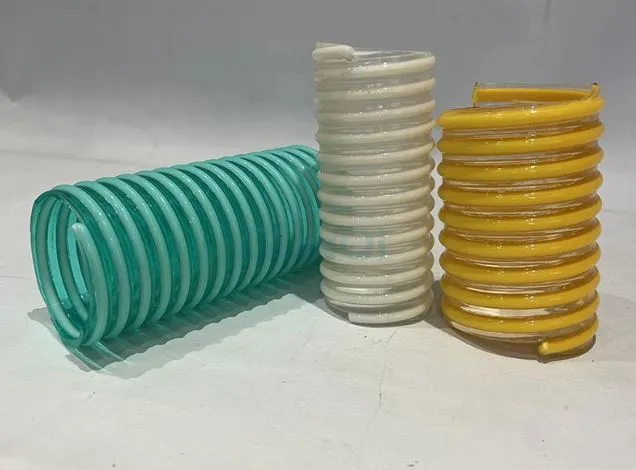air hose pvc
PVC Air Hoses Versatile and Durable Solutions for Air Transfer
When it comes to transferring air in various applications, choosing the right hose is crucial for efficiency, safety, and reliability. Among the various options available, PVC (polyvinyl chloride) air hoses stand out due to their versatility, durability, and cost-effectiveness. This article explores the features, advantages, and applications of PVC air hoses, making a case for why they may be the ideal choice for both industrial and home use.
What is PVC?
PVC, or polyvinyl chloride, is a synthetic plastic polymer that has gained popularity in many industries due to its adaptable nature, strength, and resistance to environmental stressors. When used as an air hose, PVC provides a robust medium for conducting air under various conditions, making it suitable for numerous applications.
Key Features of PVC Air Hoses
1. Lightweight and Flexible One of the most significant advantages of PVC air hoses is their lightweight nature. This makes them easy to handle and maneuver, even in tight spaces. Additionally, they possess a high degree of flexibility, which allows them to be bent and coiled for convenient storage and transport.
2. Durability PVC is well-known for its resistance to abrasions, weather conditions, and chemical exposure. This durability means that PVC air hoses can withstand rigorous use in industrial applications or be exposed to harsh environmental elements without degrading.
3. Wide Temperature Range PVC air hoses can function effectively in a broad range of temperatures, typically from -20°F to 150°F (-29°C to 65°C). This versatility allows them to be used in various environments and conditions without compromising performance.
4. Non-conductive PVC is a non-conductive material, making it a safe choice for pneumatic systems where electrical interference is a concern. This property is especially important in settings with sensitive electronic equipment.
air hose pvc

Applications of PVC Air Hoses
PVC air hoses are utilized in numerous sectors due to their adaptability. Here are some of their primary applications
1. Construction and Industrial Use In construction sites and manufacturing plants, PVC air hoses are commonly used to power pneumatic tools such as nailers, impact wrenches, and sanders. Their durability and flexibility make them ideal for environments where hoses must endure wear and tear.
2. Automotive Repairs Mechanics often rely on PVC air hoses for air-operated tools and systems. These hoses provide consistent airflow essential for tire inflation, sanding, and painting applications, facilitating efficient vehicle repairs.
3. Gardening and Landscaping Beyond industrial applications, PVC air hoses can also be employed in horticultural settings. They can be used for air-powered irrigation systems or to transfer air to aerate soil, promoting healthier plant growth.
4. Home Use Many DIY enthusiasts and homeowners use PVC air hoses for various projects around the house. Whether inflating sports equipment or using pneumatic tools for home improvement tasks, the versatility of PVC hoses makes them suitable for any household.
Conclusion
In summary, PVC air hoses offer a practical, durable, and cost-effective solution for transferring air across multiple applications. Their lightweight design, flexibility, and resistance to wear and environmental factors make them a preferred choice for various professionals and DIY enthusiasts alike. Whether you're in a high-demand industrial environment or tackling a home project, investing in quality PVC air hoses can significantly enhance your air transfer efficiency and productivity. As technology advances, these hoses are likely to evolve, further solidifying their role in a wide range of applications.
-
Top Quality Oxy Acetylene Hoses for Sale Fit for Welding DemandsNewsJul.28,2025
-
The Future of Pneumatic Air Tubes in IndustryNewsJul.28,2025
-
Superior and Reliable LPG Hose Pipe Solutions for Every NeedNewsJul.28,2025
-
Exceptionally Durable and Versatile Premium Braided PVC TubingNewsJul.28,2025
-
Best Adapters for Connecting Garden Hose to PVC Pipe ConnectionsNewsJul.28,2025
-
The Essential Role of LPG Hoses in Safe and Efficient Gas DistributionNewsJul.16,2025














